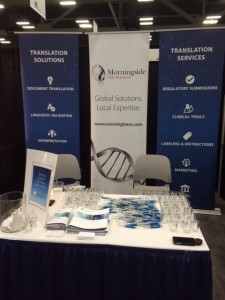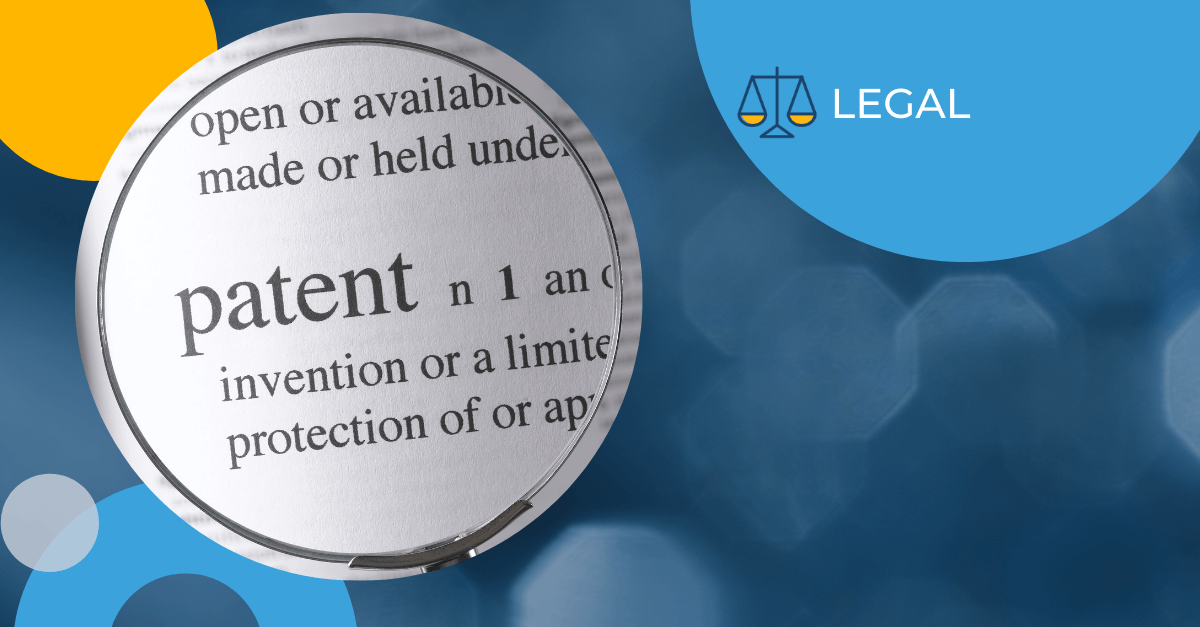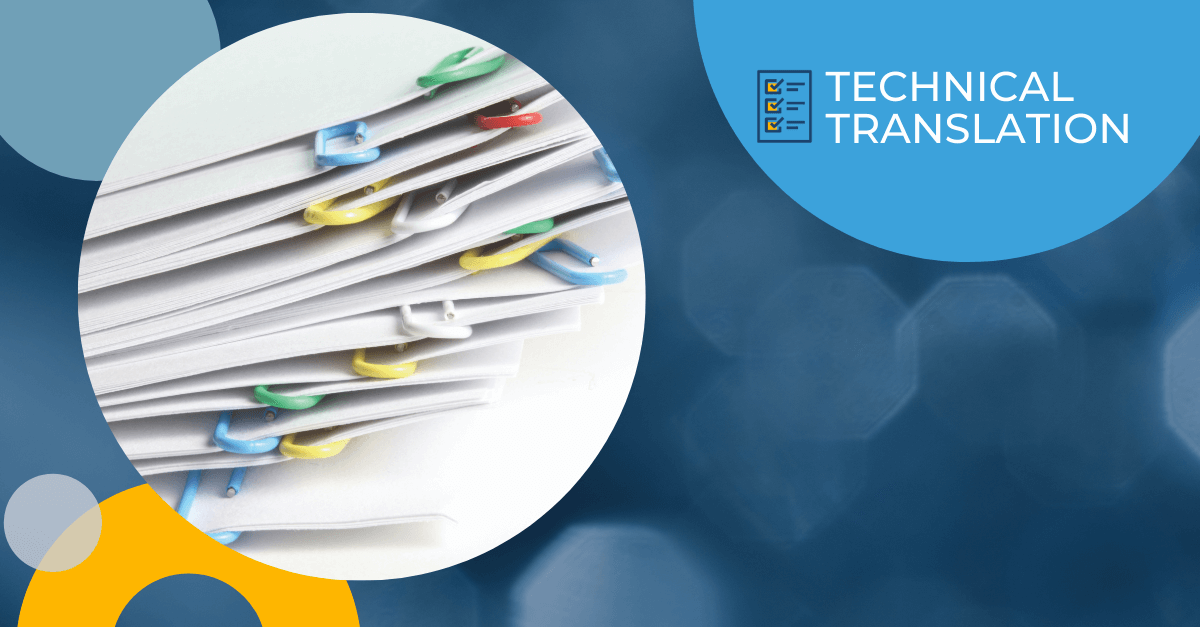Tag: patent translation
3 Advantages to Partnering with a Strategic IP Services Partner for Technology Transfer Offices

Technology transfer offices determine a university’s intellectual property strategy for patent protection, licensing and commercialization, but surprisingly few have comprehensive internal capabilities. Given the enormity of the investment, the complexity of the work, and the potential revenue at stake, technology transfer offices that lack end-to-end internal resources need a strategic IP services partner to help them make the most of their patent portfolio.
There are myriad advantages to partnering with strategic IP services and translation partners but for brevity’s sake, let’s focus on three big ones:
A Focus on Cost Savings
This is perhaps the most relevant one because most technology transfer offices operate under extremely tight budgets until they can gain patent protection and find a suitable licensee or buyer. If you’re not currently partnering with IP services and translation providers, there’s an opportunity for significant cost savings.
Most tech transfer offices work with several outside counsel firms who, in turn, use foreign associates or external vendors for translations – and it’s the same for foreign filing. You can increase your purchasing power through consolidation because increased volume flowing through a single strategic IP service and translation provider means more significant discounts. A streamlined operation with lower costs associated with the IP makes said IP more appealing to potential licensees.
There’s No Additional Work
Technology transfer offices are operating under tight budgets, and the same is true for their internal resources – they are constrained. Securing your IP worldwide is an enormous effort, so it’s important to note that partnering with a patent translation & filing partner often eases the administrative burden. Consolidation of disparate processes creates a more streamlined workflow.
The Ability to Work With Multiple Outside Counsel
Technology transfer offices often work with multiple outside counsels depending on the subject matter or the discipline involved. On top of that, potential licensees usually prefer outside counsel. With that in mind, an IP services company understanding the landscape and existing relationships with many external counsels could be highly beneficial. Morningside, for example, works with 97% of the AmLaw 200 – so chances are we’re already working with them.
Technology transfer offices are situated at the confluence of limited resources and enormous potential, so they must maximize the available resources. As the most significant patent translation & filing company in North America, Morningside has the experience, the ability and the capacity to help technology transfer offices consolidate their efforts, save money, streamline their processes and ultimately maximize their potential. You can learn more about our services here.
Get the latest insights delivered to your inbox
Join us at RAPS 2014!

Morningside is @ the 2014 RAPS the Regulatory Convergence in Austin, Texas! If you haven’t worked with us yet and would like to learn more about our medical translation and patent translation services as well as our linguistic validation services for the life science industry, this is an excellent opportunity to connect. Look for us at Booth 328. We have great giveaways and you can enter our raffle to win the new iPad!
Get the latest insights delivered to your inbox
5 Steps to Ensure a Successful Translation

When you’re planning an entry into a new market, translating your documents may seem like the least of your concerns. Yet, a poorly translated project can harm your company’s perceived professionalism, negatively impact the message they are trying to get across and handicap an otherwise brilliant new market strategy.
Here are 5 steps you can take to ensure your translation process runs smoothly.
1. Provide Enough Time
Time is everything, and whether you are tackling document translation, patent translation, medical translation, or website localization, it is important to give yourself enough time to perfect it. You want to make sure that the translator or translation company has enough time to thoroughly research the subject matter, prepare the translation, and revise and proofread until the final draft is perfect.
The Project Manager at Morningside, says that “Collaboration is key, the more time you have with your translator the more likely you’ll be on the same page. Effective teamwork and communication is one of the keys to localization and translation success.”
Tip: If you know that you will need a translation done and you want to reach out to a professional translation company, speak with them as early as possible so that they can build a custom workflow for your project and find the ideal translator for your project.
2. Create a translation glossary and style guide.
A translation glossary and style guide are helpful cheat sheets for linguists to better understand your company. A translation glossary includes the companies “lingo”, words that should stay consistent throughout, and words that should not be translated such as product names. A style guide describes how a company should be presented visually and textually and the overall style and tone of the company. In short, it identifies those branding elements that must remain, no matter the locale. Providing both a translation glossary and style guide to linguists can help ensure consistency. Without this, words and phrases can be translated in multiple ways across different languages meaning more time spent revising translations to create consistency. A Glossary and style guide can not only help with consistency, but it can also reduce the length of time it takes to complete each document translation and cut costs.
3. Don’t use Multiple Linguists
You might think that using many linguists for large projects will speed up the process, but it could have a negative impact on the overall quality and cohesion of the project. Why is that? The more linguists involved, the more prone you’ll be to inconsistencies in the translation. Beyond the specific style and tone of each linguist, many words have multiple translations that could fit in a given language and consistency is key when delivering a message and building a brand. This is especially true if you want to keep with a specific and notable brand image or content style used in the past. The same also applies to your proofreader – give one person enough time as opposed to forcing the issue with multiple people.
The caveat to this idea is getting a fresh set of eyes on a longer project. Once you’ve completed a translation, give one person with fresh eyes the chance to look it over and check for mistakes.
4. Provide as much detail as possible.
The more information you can provide to your translator or translation company, the better. Besides including more details in the translation, it gives the translation service a more accurate ability to choose a translator that has the expertise in that specific field.
5. Translation memory tools.
Translation memory tools are able to store segments, such as sentences, titles, headings, and phrases and create a database for future projects. This helps save time and money for any updates that need to be done to a project, or for translating any new content. It enforces consistency throughout all versions of any projects and also cuts time because the linguists don’t have to spend time re-translating the same thing time and time again. Morningside Translations currently works with both MemoQ and SDL Trados Studio which has helped reduce client costs tremendously.
A high-quality translation is a key part of bringing your product or service to a new market, and a poorly executed translation can cost you business. By following the above tips, you can improve the quality of your translation, lower costs and help make your entry into new markets an easier process.
Get the latest insights delivered to your inbox
What Is This Patent Translation For?

Morningside specializes in patent translation services. We translate thousands of patents per year into Spanish, Japanese, Chinese, Brazilian Portuguese, and numerous other languages. We also translate thousands of patents from German, Japanese, French, and other languages into English.
Patent translation is an exacting discipline, and regardless of what it is being used for, multiple rounds of proofing are needed to ensure an accurate outcome. But depending on whether the patent translation is needed for prior art research or for foreign filing, Morningside selects different patent translators and uses different methodology. For example, patent translations for PCT national stage entry and EP validation are translated in the target country and the QA process is overseen by local patent attorneys practicing in the field of the invention. Formatting and other requirements of the relevant patent office are strictly adhered to. Patents translated into English for research or information purposes are prepared by domestic patent translators and editors with an emphasis on clarity and comprehensibility as well as accuracy.
So the next time you request a patent translation, it’s always helpful to let us know what it will be used for. That information will help us select the most appropriate patent translator and QA workflow for the job.
Get the latest insights delivered to your inbox
6 Strategies for Managing Patent Translation & Filing Costs

A new article listing 6 top strategies/tips for managing patent translation and filing costs has just been posted on IP Watchdog. The authors are Gene Quinn, a patent attorney and president of IPWatchdog, and Ethan Perlson, our own director of marketing.
An excerpt:
Given the sluggish economic recovery and continued budget pressure on IP departments, it makes sense to consider new strategies for lowering the steep costs related to international patent filing. Patent Translations can account for up to 50% of the cost of national stage entry, so cost-cutting strategies could make a significant difference in the bottom line. Strategic costs savings can then be used to stretch a diminishing budget, or offer opportunities to expand patent protection into other countries without busting your budget.
Before moving into discussion about ways to cut cost it is important to focus on the end goal. It is one thing to cut costs, but to borrow a popular political phrase – you want to cut with a scapula, not a clever. Thus, keeping in mind the ultimately end goal at every step will allow you to engage cost cutting strategies without compromising your patent project. Of course, the end goal is to obtain the broadest, strongest patent portfolio; obtaining patents in a variety of jurisdictions where meaningful business opportunities exist.
You can read the full article here.
Managing patent translation and filing costs can be simplified when working with experienced-professional language service providers, like ourselves. Morningside has delivered accurate, reliable patent translations for the world’s largest companies and law firms. Our streamlined filing solution helps lower costs and ensures quality. Contact us today to learn more.
Get the latest insights delivered to your inbox
Patent Filing in China

More global companies than ever before are seeking to protect their intellectual property rights in China. They rightly view China as one of the world’s largest markets. We at Morningside specialize in patent translation and filing, and over the last five years, we have watched as China has shifted from a country that clients often file in to one they view as absolutely essential for IPR purposes. In 2012, Morningside is slated to translate and file more applications for national stage entry into China than ever before.
Of course the big question mark regarding filing in China continues to be the quality of patent protection and the widescale IP infringement that dissuades many global companies from filing there. This week, there was some encouraging news. China’s State Intellectual Property Office (SIPO) said it would increase enforcement to prevent IP infringement. At a forum that included foreign diplomats and trade representatives, Wu Kai, deputy director of SIPO’s International Cooperation Department, said, “The Chinese government has attached great importance to this issue in recent years and made great achievements in legislation, enforcement, management, and training.”
It’s not clear if this constitutes a real change or just PR. After all, earlier this month China was once again at the top of the United States Trade Representative’s priority watchlist of countries that condone IP infringement.
Still, most experts agree that IP enforcement has improved in China, and patent holders are certainly investing considerable sums of money filing in China: In 2011, the number of applications surpassed 1.63 million, an increase of 33.6 percent over 2010. And filings grew from 63,000 in 2001 to 526,000 in 2011, an annual average increase of 23.6 percent.
Hopefully, China will follow through with improved IP laws and enforcement. If they do, we can expect patent filings in China to continue to increase, and global companies who seek IP protection in China to see significant ROI from this decision.
Get the latest insights delivered to your inbox
Document Translation Dispute Irks Judge

Disputes involving document translation are not unusual during patent litigation. What is unusual is for the presiding judge to single out these translation disputes in his decision. But in Gemstar- Tvguide International Inc & Others v Virgin Media Ltd & Another [2011] EWCA Civ 302, Lord Justice Robin Jacob did exactly that.
The case hinged on whether several Gemstar patents lacked novelty because a Toshiba patent published a month earlier disclosed the same idea clearly and unmistakeably. Since the Toshiba patent was in Japanese, the translation of the document became a key issue. Lord Justice Jacob notes:
“…I must say a word about the disputes over translation. For there have been several translations. A lot of expense and time was wasted because of this…In principle, whenever a party relies on a document in a foreign language, the translation should be sorted out at an early stage. Ideally the party relying on the translation should send it to the other(s) with an express request for agreement within a reasonable time…If the translation is agreed, well and good. But if not, the Court at the case management stage should normally insist upon agreement or early resolution of the translation dispute, if necessary by a hearing for that purpose.”
Lord Justice Jacob goes on to say that in the end the translation issue was only settled at the trial. The bottom line is that document translation should be carried out at an early stage, so that any disagreements can be worked out during the case management conference, if not before. For critical foreign language documents, it also makes sense for each side to exercise due diligence by having the translation independently reviewed and/or performing a backwards translation and asking the translator to explain any discrepancies. If your translations aren’t in order before the trial begins, you risk provoking the judge’s ire.
Get the latest insights delivered to your inbox
Patent Translations, Language Wars, and EU Patent

How hard is it to agree on a single European patent that grants IP protection across Europe? Very, very hard. For decades, companies doing business in Europe have pushed Eurocrats to replace a system of national patents requiring costly translations into multiple languages with a single European patent. But national interests and pride- in particular, language pride- have stood in the way.
When the London Agreement concluded in 2000, most EU states grudgingly accepted that only patent claims would be translated into each of their native languages. Further progress came last year when Europe signed off on an EU patent that would require patent claims to be translated into English, German, and French only–the most commonly spoken EU languages and the working languages of the European Patent Office (EPO) since 1997. Beyond translating the claims into the other two official languages, patents written in English, German, or French would require no further translation to grant patent protection across the EU. But Spain and Italy–powerful EU states with widely spoken languages–have strongly objected. They say the proposal gives British, German, and French companies an unfair advantage and insists that any European patent include Spanish and Italian as one of the official languages, or else that English only should be the official language. All the EU states, minus Spain and Italy, supported the new EU patent, but the proposal could not move forward without unanimous consent.
Then last week, the Council of the European Union voted to proceed under the enhanced cooperation procedure, which allows EU member states to adopt new rules where unanimous agreement cannot be reached, essentially overruling Spain and Italy’s veto power.
Will this new push finally break the political deadlock? It’s too soon to tell. Spain and Italy have threatened to mount a court challenge, arguing that forcing Spanish and Italian companies to prosecute patents in another language violates their right to defense. In the meantime, companies seeking European patent protection will still need to translate claims or the full spec to obtain protection in most member states and decide if that protection merits the costs associated with translation and validation. Increasingly, American companies are forgoing protection in most of Europe due to the high costs and focusing only on those states where no other translations are required after grant. This group includes France, Great Britain, Germany, and Switzerland but does not include many of Europe’s biggest economies, including Spain and Italy, where the full spec needs to be translated.
Get the latest insights delivered to your inbox
English – A Polyglot Language

As a professional translation company, we spend much of our time focused on foreign languages, especially languages that come up frequently for legal translations and patent translations. But every so often we turn our attention to our native English. We are constantly surprised by how diverse the English language is, and how much of the English vocabulary is derived from foreign words. According to one survey, only one-third of English words come from Old English. 41% come from French and Old Norman, and at least 15% comes from Latin. Another 10% come from a mix of other languages.
There are plenty of English words whose foreign origin is quite obvious. We can guess where chauffeur, angst, and desperado come from (French, German, and Spanish). But many words that sound like “classic” English also have a foreign origin, and the origin is not necessarily European or even Indo-European–you have probably used a few words today that come from languages that many of us have never heard of. Here are a few examples:
- Ketchup – The word comes from Amoy, a Chinese dialect, where it meant the brine of pickled fish.
- Barbecue – The quintessential American cooking tradition, BBQ actually comes from Carib, a language spoken in northern South America and the Caribbean.
- Sugar & Candy – These sweet words come from Sanskrit, the ancient Hindu language of Northern India.
- Husband – The word comes from Old Norse, the extinct language of the Vikings, where it meant “master of the house.” In modern American usage, it often means the exact opposite.
- Pal – The word comes from Romany, the Gypsy language, where it means brother or comrade.
- Tank – As in water tank. The word comes from Gujarati, a language spoken in India.
Get the latest insights delivered to your inbox
Reviewing a Translation

When choosing a translation service, it is important to find out which translation company can provide you with the quality legal translation or technical translation you require in order to ensure top quality.
Morningside is a translation service which delivers top quality translations since we are a translation company that insists on reviewing each and every single legal translation or technical translation that is delivered to our clients.
Reviewing a technical translation or a legal translation requires not only a cursory review of the completed language translation, but also requires further layers of review. As a translation company, we strive to ensure the review of the technical translation, legal translation, or patent translation that our client receives includes layers of review.
These layers of review include but are not limited to, review of language, review of specific terminology to ensure consistency, review of dialect, and review of spelling. While there are other areas of review which we take care of, at the end of the day all of these measures are what makes Morningside your choice for a translation service or translation company.
Whether your needs include a document translation, legal translation, technical translation, patent translation, or document review, Morningside can assist you and provide you with a top quality translation and we ensure that the following time you are seeking a translation service or translation company, you will look to Morningside for their translation and review expertise.

